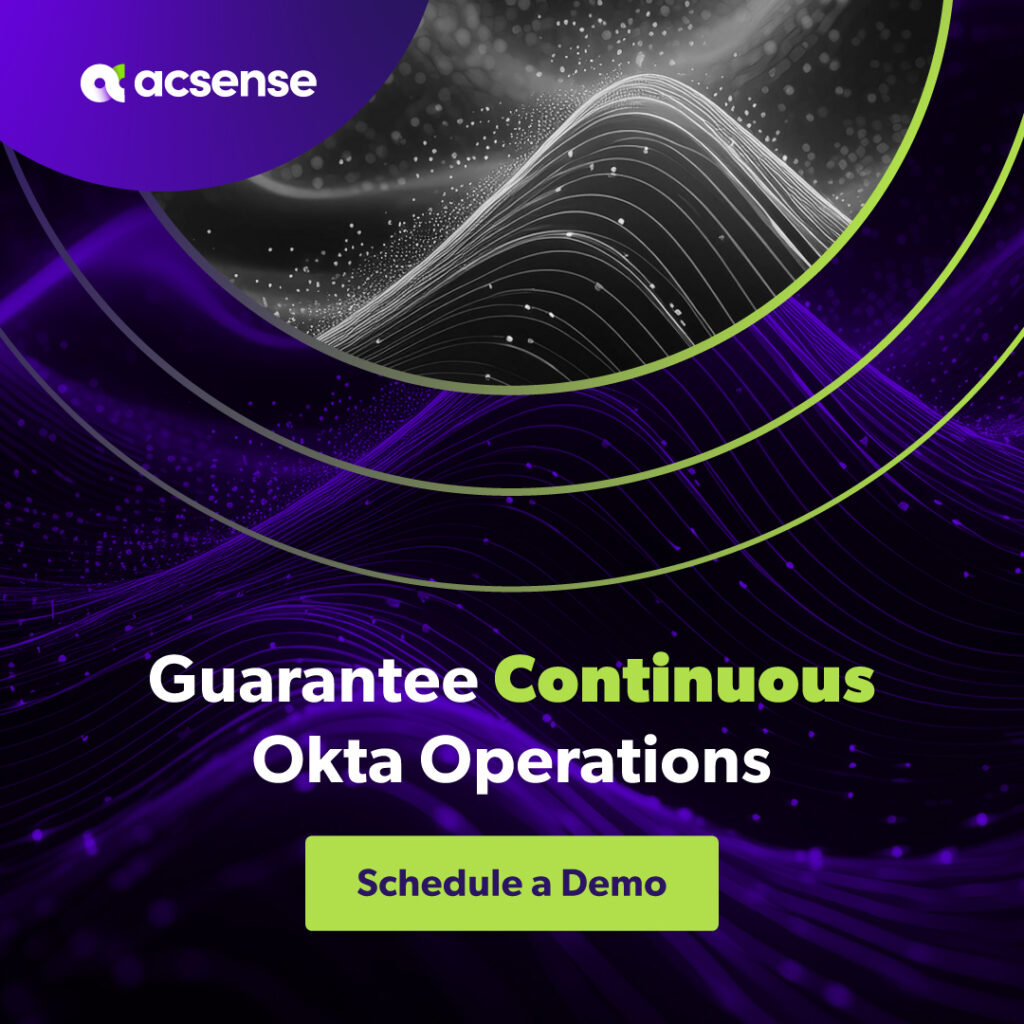Maximizing Business Resilience With RTO and RPO: A Guide to Best Practices
The recovery time objective and recovery point objective are crucial elements for cybersecurity.
With similar-sounding acronyms, both are significantly different.
The Recovery Time Objective concerns the downtime your business can tolerate after an incident or a disaster. Recovery Point Objective, however, talks about how much data your business can afford to lose before any harm occurs.
According to the latest research by ITIC, the hourly cost of downtime has exceeded $300,000 for about 91% of SMEs and large enterprises. All in all, about 44% of respondents reported that even one hour of downtime could cost them more than $1 million.
If you are still wondering what RTO and its importance are, keep reading.
What is the Recovery Time Objective, and Why is it important?
The Recovery Time Objective (RTO) is focused on the time frame within which an organization can resume its normal operations after a disaster.
Per the definition by the Computer Security Resource Center, The overall length of time an information system’s components can be in the recovery phase before negatively impacting the organization’s mission or mission/business processes.
One of the significant goals of RTO is to determine the time duration required for a recovery process to come into action after a major incident and for businesses to resume their normal operations.
So now that you know what RTO is and its goals, let’s delve into its importance.
The Recovery Time Objective is critical for various reasons, including:
- Reducing downtime
- Financial losses mitigation
- Customer trust maintenance
- Meeting the regulatory requirements
- Safeguarding reputation and managing risk
Operational continuity, resource allocation, effective planning, and training and improvement are some of the critical features of RTO.
The recovery time objective is important as it offers a measurable and practical framework for your organization to both plan for and respond to disruptions effectively.
RTO contributes to your business’ resiliency and continuity.
Why is RTO Important in Business Continuity?
Recovery Time Objective (RTO) is a critical concept in a business continuity plan.
RTO is the maximum time your business can afford to survive without certain functions or systems after a disruptive event like a cyberattack, hardware failure, or a natural disaster. The recovery point objective is a significant metric used to determine how quickly your business can bounce back and resume its operations to avoid any negative consequences.
Let’s understand the relationship between recovery time objective and business continuity.
Defining Recovery Goals:
RTO is your guide that helps in establishing recovery goals within your business continuity plan.
RTO will help your business set specific targets. These targets will help you decide how quickly you will need to restore your critical functions and systems to minimize disruptions.
Influencing Resource Allocation:
During the planning phase, the recovery time objective influences resource allocation and helps your organization in prioritizing the systems/processes, which have to recover first and accordingly allocate the resources. The shorter the recovery time objectives, the higher the priority and more resource allocation.
Risk Assessment:
The recovery time objective is based on the potential risks and impacts your business faces.
It typically considers financial losses, customer dissatisfaction, regulatory compliance, and reputation damage as some of the critical factors. By assessing these risks, organizations can tailor their business continuity strategies more effectively.
Technology and Infrastructure Planning:
The recovery time objective considerations affect technology and infrastructure decisions. Businesses may invest in redundant systems, backup data centers, or cloud services to meet their recovery time objective requirements. These investments aim to ensure that critical operations can be quickly restored in the event of a disruption.
Testing and Training:
Recovery Time Objective plays a crucial role in the testing and training phases of a business continuity plan.
Organizations can meet their RTO targets with regular testing. Staff must be trained to execute recovery procedures effectively within the specified time frames.
Continuous Improvement:
Business Continuity Plans have to be reviewed and updated periodically to reflect technology, operations, and risk changes. Recovery Time Objective may be adjusted as part of this process to align with evolving business needs and objectives.
Compliance and Reporting:
For some industries, the regulatory requirements mandate certain recovery time objectives for specific critical data or functions.
It is essential to meet those compliance or else there could be legal implications.
Recovery time objective is a crucial component of a business continuity plan as it helps your business to determine how quickly you need to recover after a disruption happens. A well-defined recovery time objective is essential for minimizing downtime, mitigating financial losses, and maintaining customer trust during and after a crisis.
Understanding the Roles of RTO and RPO in Disaster Recovery
The two critical metrics in disaster recovery planning are RTO and RPO.
These metrics help your organization to define and measure the preparedness and ability of your business to recover from different disaster types like natural disasters, hardware failures and cyberattacks, or any other disruptive events.
Let’s Understand What Role RTO Plays in Disaster Recovery.
- It prioritizes recovery efforts.
- It sets clear expectations.
- It allocates resources per their requirements.
Role of RPO in Disaster Recovery:
- It protects data during a disaster.
- It helps in risk management.
- Application recovery and synchronization is another critical role of RPO.
RTO and RPO are fundamental concepts in disaster recovery planning.
While RTO focuses on downtime, RPO focuses on data loss.
RTO and RPO are interconnected and must align with your organization’s overall business continuity strategy. They are critical for creating a disaster recovery plan that meets business needs while managing the associated risks and costs effectively.
Key Differences Between RTO and RPO
| Differences between RTO and RPO | ||
| RTO | RPO | |
| Definition | RTO is the maximum allowable downtime for a system or application | RPO is the maximum permissible data loss in a disaster or system failure. |
| Focus | RTO focuses on downtime and recovery speed and answers, ”How quickly can we get our systems up and running again?” | RPO focuses on data loss and recovery points and answers, “How much data can we afford to lose?” |
| Impact on Operations | RTO measures the effect on business operations in terms of downtime. | RPO measures the impact on data integrity and consistency |
| Technological Requirements | Achieving a low RTO often requires redundancy, failover systems, and quick recovery mechanisms, such as backup and disaster recovery solutions. | Achieving a low RPO typically involves frequent data backups, replication, and data protection measures to ensure that data is consistently captured and available for recovery. |
| Use Cases | RTO is important for mission-critical applications where downtime must be minimized, such as financial systems, e-commerce platforms, and emergency services. | RPO is critical for applications that handle sensitive or constantly changing data, like customer databases, healthcare records, and financial transactions. |
RTO Best Practices for Your Business
Recovery Time Objective’s best practices ensure that you optimize risk tolerance – a critical aspect of risk management and ensure that your operations run smoothly despite a disaster.
Risk Tolerance Assessment with Stakeholders:
- Engage your organization’s key stakeholders like executives, department heads, and IT personnel.
- Identify and evaluate the risk tolerance levels your business can accept. The step involves understanding how much downtime and data loss your business will be able to tolerate before negative consequences take over.
- It is essential to ensure everyone is on the same page about risk tolerance levels, as that understanding will guide decision-making about backup and recovery strategies.
Realistic Service-Level Agreements (SLAs):
- SLAs are agreements defining the level of expectations in services and performances across the different departments of your organization or your organization and your service providers.
- SLAs should be clear while specifying recovery time objectives (RTO) and recovery point objectives (RPO). While RTO is the maximum allowable downtime, RPO is the maximum data loss allowed.
- SLAs should be realistic and achievable per your organization’s risk tolerance and your capability to take backup and recovery systems.
Rank Your Applications into Tiers Per Their Importance
- Categorize your applications and data into tiers as per their importance and criticality.
- Tier 1 can include mission-critical applications that need the shortest RTO and RPO.
- Tier 2 can encompass important but not mission-critical applications.
- Tier 3 can include less critical systems.
- The tiering will help you allocate your resources and prioritize your recovery efforts accordingly.
Existing Backup and DR Technology Effectiveness Assessment:
- Regularly evaluate your current backup and disaster recovery (DR) solutions to understand how well they are meeting your business needs.
- Assess your existing technology for performance, reliability, and scalability.
- Address all or any gaps or shortcomings in your current setup.
Modern Backup and Recovery Technologies:
- Keep yourself updated on the current advancements in backup and recovery technologies.
- Explore the capabilities of these technologies to improve RTO and RPO and improve data protection while reducing operational risks.
- Consider exploring solutions like cloud-based backup, snapshots, replication, and automated failover.
Exercising Due Diligence:
- Conduct thorough due diligence before you implement new backup and recovery technologies or when you outsource these services.
- You must evaluate all the potential vendors or service providers for their track records, security measures, and compliance with industry standards.
- You must ensure the solution you choose aligns with your risk tolerance and SLAs.
These are some of the best practices that can help you optimize your recovery time objective strategies, minimize downtime, and safeguard your business against data loss and operational disruptions.
Final Words
Understanding and optimizing your Recovery Time Objectives (RTO) and Recovery Point Objectives (RPO) are pivotal for business continuity.
However, in our increasingly digital landscape, the resilience of your Identity and Access Management (IAM) systems is just as vital. Given that IAM is often the backbone of modern enterprises, its failure can be catastrophic, affecting both operational efficiency and cybersecurity. Particularly in cloud-based IAM systems like Okta, the shared responsibility model puts the onus on organizations to safeguard their data and configurations.
Here’s where Acsense can make a difference.
As your trusted partner for enterprise IAM resilience, we offer targeted, automated backup and recovery solutions that align with your RTO and RPO goals. With features like one-click recovery and continuous data verification, acsense enables you to tackle vulnerabilities, be they human errors or cyber threats like ransomware and insider risks.
Don’t leave your IAM resilience to chance.
Book a call with the Acsense team to schedule a demo and learn how RTO and RPO are equally important for your IAM systems and infrastructure to keep its operations up and running during an emergency.
FAQs:
- What is a reasonable recovery time objective?
The reasonable recovery time objective is the maximum acceptable time that an application, computer, network, or system can be down after an unexpected disaster, failure, or comparable event takes place. - What is the best recovery point objective?
The best Recovery Point Objective is when it is set to frequently update the files, implying the recovery point is no longer than a few minutes. In short, zero is the ideal recovery point objective. - What are RTO and RPO requirements?
RTO and RPO requirements are the specific values or targets established by an organization to define the maximum acceptable downtime and data loss in the event of a disaster, system failure, or disruption.
These requirements are crucial components of disaster recovery and business continuity planning and are tailored to the needs and priorities of the organization. - What is the RPO industry standard?
RPO has no single industry standard that applies universally to all organizations.
RPO requirements vary broadly based on factors like business nature, regulatory requirements, data sensitivity, and the technology infrastructure in place. What is an acceptable RPO for your organization may not be adequate for others.

